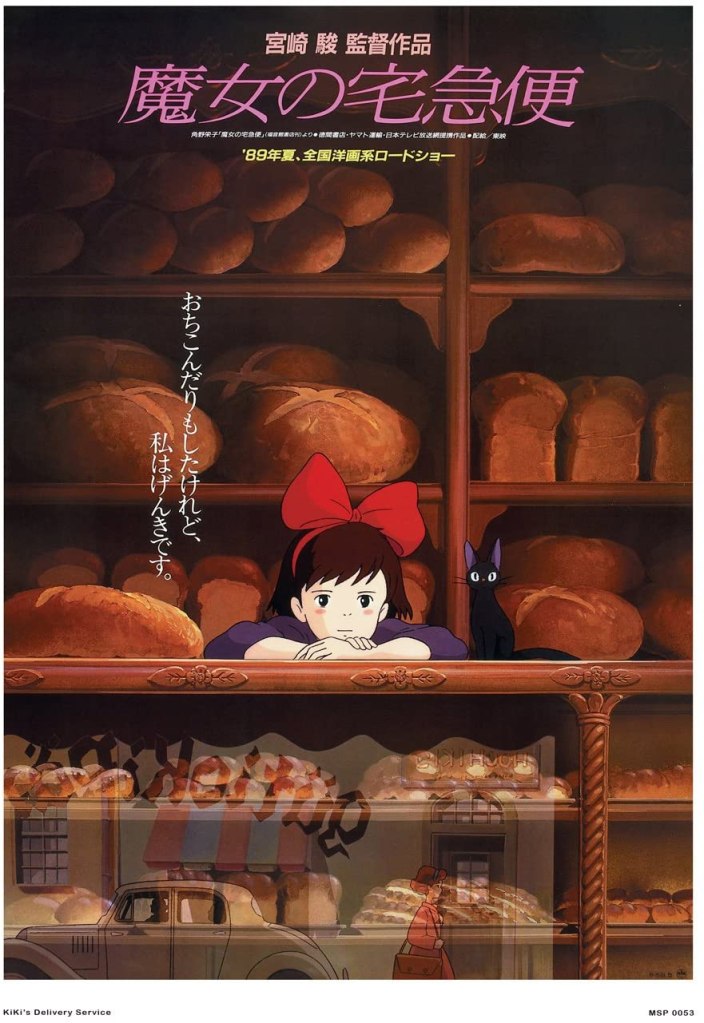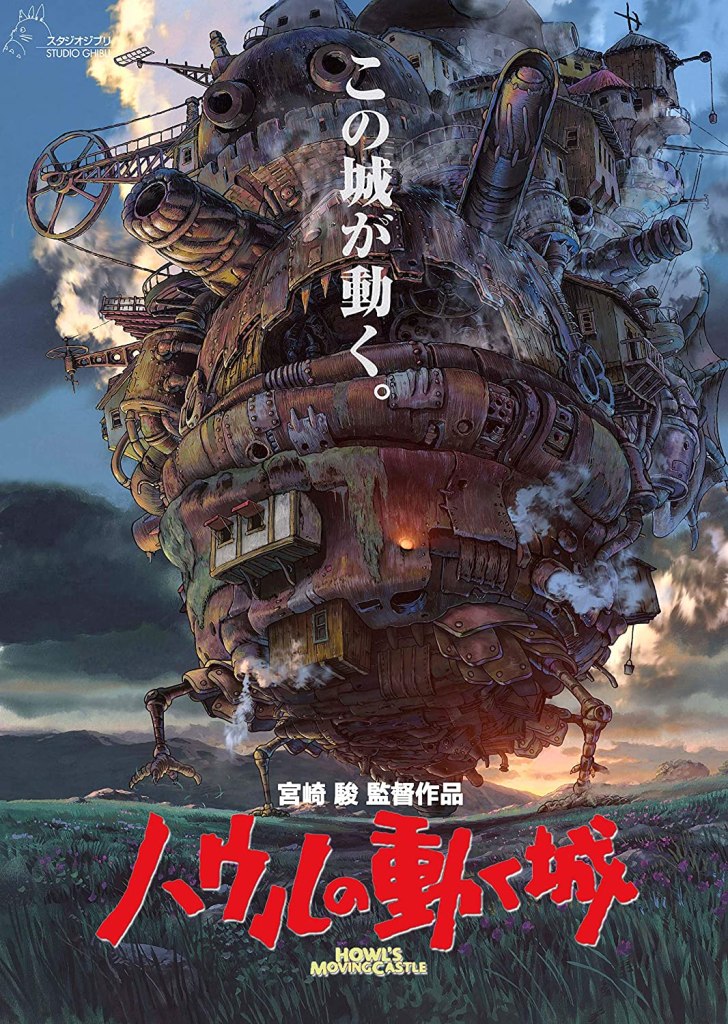Anime Witches
In 2003, Hayao Miyazaki won an Academy Award for his animated feature Spirited Away. Despite the sad fact that only because of this recognition did the audience become interested in his work worldwide, the end result is favorable either way. People started to discover some of his earlier masterful works such as My Neighbor Totoro (1988), Princess Mononoke (1997) and so much more, and although almost all of his work is often described as magical, I’d like to focus on 2 of his films today that probably have Studio Ghibli’s most famous witch and wizard; Kiki and Howl.
Kiki’s Delivery Service (1989)

Based on the 1985 children’s novel by the same name by Eiko Kadono, the movie follows the life of Kiki, cinema’s most adorable witch. The young 13 year old, accompanied by her black cat Jiji, sets off on a journey to settle in a new town, as is custom for witches her age. We follow her as she hops off into the sky on her broomstick, in search of a new home, and a way to achieve her independence. It’s a coming of age fairytale that values determination and perseverance, in a sort of “the beauty is in the journey itself” kind of way. There’s a lot to be said about Kiki, her zealous efforts to prove herself and make money on her own, whether by cleaning a bakery or starting a delivery service, are certainly admirable, and yet they raise the question of why is a flying witch not able to make money easily in the first place?
In Kiki’s world, magic is taken for granted; the fast-paced rhythm of the city allows citizens only a few seconds of wonder when Kiki first flies in. Her delivery services are not always rewarding, as it doesn’t really matter if she’s delivering the packages on a broomstick or on foot, as long as the clients get their money’s worth. Later in the film when Kiki experiences burnout, it doesn’t come off as a shock, since her passion for flying has been sucked up entirely into her work. It’s only later on when she recluses to a friend’s cabin in the woods is she able to regain her powers, and ultimately a way to balance her love for flying, and her delivery service.
Howl’s Moving Castle (2004)

Again based on a children’s novel by Diana Wynne Jones, Howl’s moving castle is about a young hatter named Sophie, who gets involved in a magical dispute between the old Witch of Waste and the young and charming wizard Howl. Early in the movie the witch casts a spell on Sophie that makes her age prematurely, and in an effort to break the curse, Sophie stumbles upon Howl’s moving castle. She takes the role of the housekeeper, and accompanies Howl, his young assistant Mrukuru, and the fire demon that keeps the castle moving Calcifer, as they try to escape the witch as well as the many wars ongoing around them.
Unlike Kiki’s Delivery Service, which is a rather simple and direct story, Howl’s Moving Castle is filled to the brim with intricate subplots, and plenty of colorful characters. Its general and clear message is against war, and like real wars, the film doesn’t have a main evil character, instead everyone is somehow entangled in the war in spite of their acknowledgement of its absurdity. The bad guys become good, and the good guys become bad, and then they restore their order altogether. It is rather this ambivalence that gives the story its realistic charm despite all the magical elements. At its heart, it’s a love story of how the two main characters, Sophie and Howl, are able to grow and become better human beings through their shared love, and even at times change their world to the better.
Although both films are very different, they share major keys of Miyazaki’s philosophy; his love for nature and embrace of the spiritual and magical world is evident in the two, and they both leave plenty of room for interpretation by the audience. Kiki’s burnout could be allegorical with humans’ abandonment of nature for the hustle of the city, or an artist’s burnout when they turn their passion into a method of paying bills among tens of other explanations. Howl on the other hand has a much more grounded story due to its complexity, yet a lot of questions are left unanswered; such as the nature of Sophie’s spell, or whether Howl’s stance on war was coming from an honest opinion or simply cowardice. Both films offer a delightful take on witches and magic with mesmerizing visuals as well as deeply sympathetic characters and stories guaranteed to charm their viewers.



